History
The Vis was a fluyt, a ship used as a merchant vessel for the Dutch East India Company (VOC). The fluyt was the most successful cargo carrier of the 17th and 18th centuries. She was of Dutch design: cheap to build, cheap to maintain and cheap to sail with a relatively large hull.
The Vis was procured by the VOC in 1732, and, as highlighted in a study by Burger (2018), the vessel was originally called the Eendracht. It was sent to Lisbon to take over the cargo of a 17-year-old dilapidated vessel named Vis, and, as was tradition, the name of the Eendracht was changed to the Nieuwe Vis, which later simply became Vis.
After three return voyages for different VOC Chambers, it started its final journey for the Chamber of Amsterdam in 1740, heading for the Cape of Good Hope. Nearing the Cape, the weather turned foul, necessitating emergency anchoring. In the early morning of 6 May, the Vis was pushed onto the rocks and was destroyed by the waves in the following days.
The Vis sailed onto the rocks near Greenpoint by accident. She carried with her specie, granite blocks and many large cast-iron cannons. In an attempt to salvage crew and cargo, a cable-way was constructed between the ship and the shore. People and cargo were then put into a cauldron, normally used to cook, to ferry everyone ashore. With two people at a time, they would be transported ashore in the cauldron. The story has it that one person got too greedy and tried to save himself with two chests and pockets filled with coins when the handle broke off the cauldron and he drowned. Fortunately, the majority of the crew were saved, with only 3 of the sick crew members not surviving.
The vessel was said to have had £500 000 worth of specie aboard, but most of the money chests were salvaged in 1740. Based on the Kaapse resoluties detailing contemporary post-shipwreck salvage actions, it becomes clear that the Vis carried a cargo of twenty chests of currency, including silver ingots and coins, some copper plates and semi-finished products. In the aftermath of the shipwreck event, local salvaging efforts were commenced with modest success – 15 of the 20 treasure chests were salvaged. Unfortunately, four sailors died in an attempt to collect the remaining five boxes.
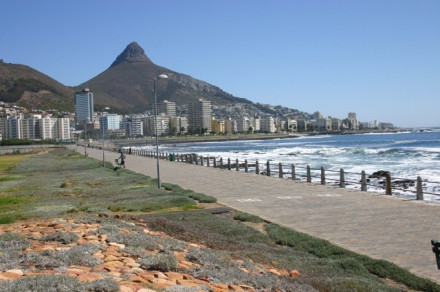
Painting of the "Visch" by Jurgen Leewenberg, 1740
The painting depicts the loss of the Vis, and the attempt to salvage crew and cargo and provides an insight into the attention such an event would have received. In the picture, we see a salvage attempt from the ship, by putting a rescue line between the ship and the shore. Dressed in black standing next to the tents is the Governor, trying to protect any goods salvaged. People are watching the event from the shore. Enslaved people wear their traditional headwear, the red kerchief. This was also known as 'woelsel' or 'kopdoek'.
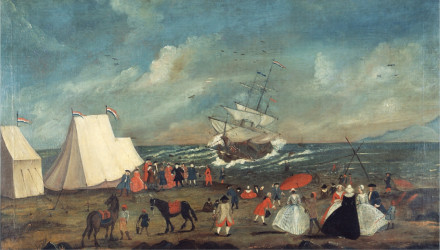
Description
The Vis was built in 1732 in Enkhuizen. It belonged to the Amsterdam Chamber of the VOC.
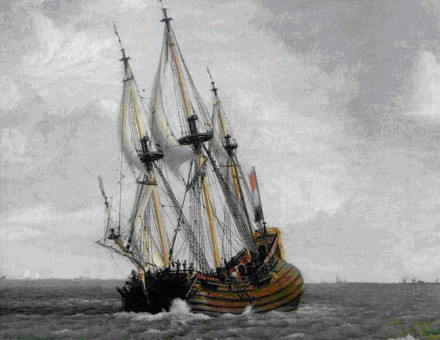
| Length | 130 feet (39.6 m) |
|---|
Status
The wreck of the Vis was found near present-day Greenpoint in Cape Town. At the site where the ship was lost, there is a commemorative plaque with information about the wreck. The ship carried specie, granite blocks and many large cast-iron cannons. However, no thorough archaeological investigation of the ship has been undertaken on account of the dynamic conditions where the ship wrecked.
The wreck site was visited by divers from as early as the 1970s, who reportedly, took some of the brass cannons and coins, perhaps ducatoons (silver coins). A small cannon was recovered from a rock pool in 1910 which was thought to come from the site of the Vis. The cannon is now reportedly in the Hout Bay Museum. There was also the suggestion during an interview that another similar cannon is in a private collection.
Reports say that there is still a large anchor and about 50 stone blocks, which are rectangular in shape and measure approximately 75 cm in length and 30 to 40 cm in height. Lead ingots approximately 1 metre long and 80 kg in weight were also found on site and taken from the location to be melted down and repurposed. Iron cannons lie in the shallows, though it is unclear whether it is the same as the muzzle-loading guns described earlier.
A cannon without markings was found on the seawall in 1947 at Mouille Point. It was purportedly from the Vis and is now in the Hout Bay Museum. Brass navigational dividers were also salvaged from the wreck.
The site probably still contains quite a lot of shipwreck-related objects, ranging from granite blocks to iron cannons, to a large anchor and coins. A ship structure has not been encountered, as far as is known.
Some of the items were auctioned by Stephan Welz & Co, auctioneers of decorative and fine arts in 2008 and 2009. An example is Lot no. 887, a small stoneware jar. Another example is that of a bronze cannon, Lot no. 448.
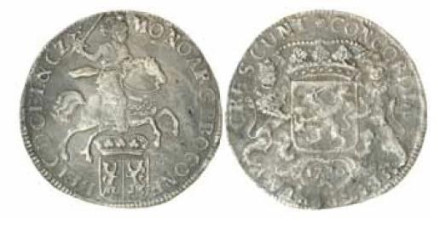
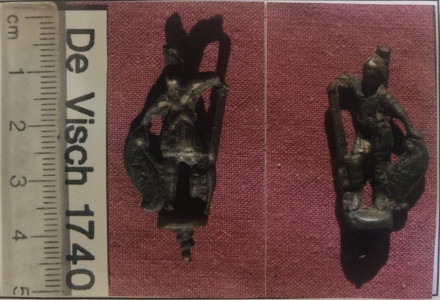
The wreck site of the Vis is protected in terms of the National Heritage Resources Act, No.25 of 1999. This act regards historic shipwrecks as well. The site may not be disturbed without the permission of the South African Resources Agency (SAHRA) and artefacts removed from the wreck may not be traded without SAHRA's permission.

References
- Dutch-Asiatic Shipping.
Details of voyage 3174.4 from Texel. - Lijst van alle zoodanige Schepen in soorten als bij de Generale Oostindische Compagnie zijn gemaekt oft gekocht als gehuurt alsmede waer oft de zelfde zijn agter gebleven ofte verongelukt als genoomen en verbrand, vermist of.
- RGP-GS166, 1979. Dutch-Asiatic Shipping in the 17th and 18th centuries, Volume II, Outward-bound voyages from the Netherlands to Asia and the Cape (1595-1794). - Den Haag: Martinus Nijhoff, 1979. - 765 p., [en] - ISBN 90-247-2270-5.
- RGP-GS167, 1979. Dutch-Asiatic Shipping in the 17th and 18th centuries, Volume III, Homeward-bound voyages from Asia and the Cape to the Netherlands (1597-1795). - Den Haag: Martinus Nijhoff, 1979. - 626 p., [en] - ISBN 90-247-228.
- Lesa la Grange, Martijn Manders, Briege Williams, John Gribble and Leon Derksen (2024).
Dutch Shipwrecks in South African Waters: A Brief History of Sites, Stores and Archives [Unpublished]. - Burger, G. (2018).
De ramp van De Vis (1740); Een Oost-Indiëvaarder van schip naar wrak in het kader van het gedeelde verleden van Nederland en Zuid-Afrika. [Unpublished].
Leiden University.